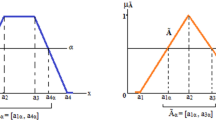Abstract
The observations from the process output are always assumed to be independent when using a control chart to monitor a process. However, for many processes the observations are autocorrelated and including the measurement error due to the measurement instrument. This autocorrelation and measurement error can have a significant effect on the performance of the process control. This paper considers the problem of monitoring the mean of a quality characteristic X on the first process, and the mean of a quality characteristic Y on the second process, in which the observations X can be modeled as an ARMA model and observations Y can be modeled as an transfer function of X since the state of the second process is dependent on the state of the first process. To distinguish and maintain the state of the two dependent processes with measurement errors, the Shewhart control chart of residuals and the cause-selecting control chart, based on residuals, are proposed. The performance of the proposed control charts is evaluated by the rate of true or false alarms. By numerical analysis, it shows that the performance of the proposed control charts is significantly influenced by the variation of measurement errors. The application of the proposed control charts is illustrated by a numerical example .
Similar content being viewed by others
References
Shewhart W (1931) Economic control of quality of manufactured product. D Van Nostrand, New York
Abraham B, Kartha CP (1979) Forecast stability and control charts. ASQC Technical Conference Transactions. American Society for Quality Control, Milwaukee, WI, pp 675–685
Alwan LC (1991) Autocorrelations: fixed and versus variable control limits. Qual Eng 4:167–188
Alwan LC, Roberts HV (1988) Time-series modeling for statistical process control. J Bus Econ Stat 6:87–95
Berthouex PM, Hunter WG, Pallesen L (1978) Monitoring sewage treatment plants: some quality control aspects. J Qual Technol 10:139–149
Dooley KJ, Kapoor SG, Dessouky MI, Devor RE (1986) An integrated quality systems approach to quality and productivity improvement in continuous manufacturing processes. Trans ASME J Eng Ind 108:322–327
Delves LM, Mohamed JL (1985) Computational methods for integral equations. Cambridge University Press, New York, NY
Ermer DS (1980) A control chart for dependent data. ASQC Technical Conference Transactions. American Society for Quality Control, Milwaukee, WI, pp 121–128
Harris YJ, Ross WH (1991) Statistical process control procedures for correlated observations. Can J Chem Eng 69:48–57
Montgomery DC (1996) Introduction to statistical quality control, 3rd edn. Wiley, New York
Montgomery DC, Mastrangelo CM (1991) Some statistical process control methods for autocorrelated data. J Qual Technol 23:179–193
Wardell DG, Moskowitz H, Plante RD (1992) Control charts in the presence of data correlation. Manage Sci 38:1084–1105
Wardell DG, Moskowitz H, Plante RD (1994) Run length distributions of special-cause control charts for correlated processes. Technometrics 36:3–17
Longnecker MT, Ryan TP (1992) Charting correlated process data. Technical report no. 166. Department of Statistics, Texas A&M University, College Station, TX
Yashchin E (1993) Performance of CUSUM control schemes for serially correlated observations. Technometrics 35:37–52
Kramer H, Schmid W (1997) Control charts for time series. Nonlinear Anal 30:4007–4016
Schmid W (1995) On the run length of a Shewhart chart for correlated data. Stat Papers 36:111–130
Lin WS, Adams BM (1996) Combined control charts for forecast-based monitoring schemes. J Qual Technol 28:289–301
Schmid W (1997) CUSUM control schemes for Gaussian processes. Stat Papers 38:191–217
Padgett CS, Thombs LA, Padgett WJ (1992) On the α-risks for Shewhart control charts. Commun Stat Simul Comput 21:1125–1147
Runger GC, Willemain TR, Prabhu S (1995) Average run lengths for CUSUM control charts applied to residuals. Commun Stat Theory Methods 24:273–282
Vander Weil SA (1996) Modeling processes that wander using moving average models. Technometrics 38:139–151
Timmer DH, Pigantkiello J Jr, Longnecker M (1998) The development and evaluation of CUSUM-based control charts for an AR(1) process. IIE Trans 30:525–534
Schmid W (1997b) On EWMA charts for time series. In: Lenz HJ, Wilrich P-Th (eds) Frontiers of statistical quality control. Physica-Verlag, Heidelberg
Zhang NF (1997) Detection capability of residual control chart for stationary process data. J Appl Stat 24:363–380
Schmid W, Schone A (1997) Some properties of the EWMA control chart in the presence of autocorrelation. Ann Stat 25:1277–1283
Lu C, Reynolds M (1999) EWMA control charts for monitoring the mean of autocorrelated processes. J Qual Technol 31:166–188
Bennett C (1954) Effect of measurement error on chemical process control. Industrial Quality Control 10:17–20
Mizuno S (1961) Problems of measurement errors in process control. Bulletin of the International Statistical Institute 38:405–415
Mittag H (1993) Qualitatsregelkarten, Germany
Mittag H, Stemmann D (1993) Effekte stochastischer Meßfehler bei bei der Anwendung von Shewhart-regelkarten zur Streungsuberwachung. Allgemeines Statistisches Archiv 77:240–259
Kanazuka T (1986) The effect of measurement error on the power of X̄-R charts. Journal of Quality Technology 18:91–95
Mittag H (1995) Measurement error effect on control chart performance. ASQC Annual Proceedings 49:66–73
Mittag H, Stemmann D (1998) Gauge imprecision effect on the performance of the X̄-S chart. Journal of Applied Statistics 25:307–317
Rahim A (1985) Economic model of X̄ charts under non-normality and measurement errors. Computer and Operations Research 12:291–299
Yang S (2002) The effects of imprecise measurement on the economic asymmetric X̄ and S control charts. The Asian Journal on Quality 3:46–56
Zhang G (1984) A new type of control charts and a theory of diagnosis with control charts. World Quality Congress Transactions, American Society for Quality Control, Milwaukee, WI, pp 75–85
Wade R, Woodall W (1993) A review and analysis of cause-selecting control charts. J Qual Technol 25:161–169
Box G, Jenkins G, Reinsel G (1994) Time Series Analysis, Forecasting and Control. Prentis-Hall, Englewood Cliffs, New Jersey
Reynolds MR JR, Arnold JC, Baik JW (1996) Variable sampling interval in the presence of correlation. Journal of Quality Technology 28:12–30
Author information
Authors and Affiliations
Corresponding author
Rights and permissions
About this article
Cite this article
Yang, SF., Yang, CM. Effects of imprecise measurement on the two dependent processes control for the autocorrelated observations. Int J Adv Manuf Technol 26, 623–630 (2005). https://doi.org/10.1007/s00170-004-2011-0
Received:
Accepted:
Published:
Issue Date:
DOI: https://doi.org/10.1007/s00170-004-2011-0




